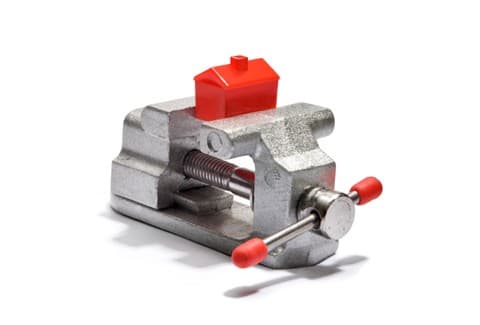- Lenders have many foreclosed REO (Real Estate Owned) property.
- The Federal Reserve has proposed three ideas about an REO to rental program.
- REO to rental is another program, like HARP and HAMP, which can possibly aid the ailing housing market.
Helping the Housing Market: From Foreclosure to REO Rental Program
As foreclosures increase, lenders have increased their stock of Real Estate Owned (REO) properties. REO’s properties, are weighing down the housing market and are bringing down the price of other properties. In an already depressed housing market, REO’s are making it more difficult to sell property or even refinance an existing mortgage. The Federal Reserve in its January 4th, 2012 paper on the housing crisis made a number of preliminary recommendations, including the REO rental program.
On Jan. 4, 2012, the Federal Reserve issued a policy paper addressing the housing market. The report focused on three different areas to improve the situation, as follows:
- Addressing foreclosed properties: REO to Rental Program
- Addressing Homeowners at Risk of Default or Foreclosure – see the Bills.com article about expanding HARP and mass refinancing.
- Mortgage Servicing: Improving Accountability and Aligning Incentives
Current Programs to aid the borrower
Due to tough economic times, poor employment and income opportunities, and an upside down housing market, the government created the Making Home Affordable programs, including:
- HARP: Allow borrowers with underwater property refinance their loans. (Borrower must be current on their mortgage, and meet other eligibility requirements, including have a Fannie Mae or Freddie Mac loan.
- HAMP: Help modify loans for borrowers who are delinquent in their mortgage payments.
As many lenders have turned to foreclosure, borrowers are seeking foreclosure alternatives, including short sales and deed in lieu of foreclosure, and bankruptcy.
REO to Rental Program

REO or Real Estate Owned Properties are homes in the possession of banks, lenders and guarantors/insurers (like Freddie Mac, Fannie Mae and FHA), after the foreclosure, process has been completed. Banks or mortgage guarantors that are in the financial industry have turned into owners of a substantial amount of property. The Federal Reserve estimates that for the 2nd quarter of 2011, 500,000 houses out of 2 million vacant homes for sale were REO properties.
The question of what they do with this property has become a major issue. Some see this as an investment opportunity to purchase property at low prices. However, many see high risks by buying property in a depressed housing market.
An Existing Program: the Freddie Mac REO Rental Initiative
Freddie Mac currently has a program, which is designed to aid borrowers who do a short sale or deed-in-lieu, in place of a foreclosure. One option is to take a cash incentive to aid relocation, under the condition that the house is left in "broom cleaned" condition and before a specified date. The other option is a REO rental, which allows the borrower to stay in the same house, in their familiar surroundings. The rental price is a fair market price, and according to Freddie Mac’s website, the qualified occupant must meet these criteria:
- Demonstrate the ability to pay the market rent
- Allow an inspector to enter and inspect the property
- Sign a separate lease agreement
- Sign a property condition disclosure at the time of the inspection
- Alloww future showings of the property to prospective buyers and real estate agents
REO to Rental: The Federal Reserve Proposal
The Federal Reserve in their January 4, 2012 white paper on housing propose as one aspect of a housing solution to improve the housing market by getting foreclosed properties out of the seller’s market and into the rental market.
Since Fannie Mae, Freddie Mac and the FHA hold together half of the inventory, they can build a cost-effective program to rent out properties. Certain areas have a large number of properties, such as Atlanta, with more than 5000 properties. Other areas with between 2000-3000 properties are Chicago, Phoenix, Detroit, Riversdale and Los Angeles.
The Fed realizes that not all properties or all areas are good candidates for rental. What they did notice is that the rental market is stronger than the selling market. By creating a REO to rental program, the inventory of homes will be reduced in today's weak seller’s market. This will have the potential to stabilize the housing market, and lessen the losses on the REO portfolio.
The Fed paper is just a preliminary working paper. We all understand that there are no magic solutions to fix the housing market. Assisting homeowners hold on to their homes, through a HARP refinance, a HAMP modification, or a REO to Rental, are all possible solutions. However, these programs come with costs and problems in implementing them. Just as Bills.com is following the HARP program, it com will follow the progress of REO to rental and other new programs and keep you in informed.
Quick Tip
Quick Tip: If you have debt problems: Use the Debt Coach to help you find the right solution.
